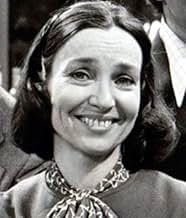Aggiungi una trama nella tua linguaThe trials and tribulations of the Ryans, an Irish-American family in New York City.The trials and tribulations of the Ryans, an Irish-American family in New York City.The trials and tribulations of the Ryans, an Irish-American family in New York City.
- Premi
- 29 vittorie e 47 candidature
Sfoglia gli episodi
Trama
Lo sapevi?
- QuizChristine Ebersole's TV debut.
- Curiosità sui creditiMedical Instrumentation courtesy of Hewlett-Packard
- ConnessioniFeatured in Love Child (1982)
Recensione in evidenza
high!i am a fan about the soap opera Ryan's hope.this soap opera has 3515 episodes.because in this site in imdb.com this episode numbers don't show. i try to watch it.i am very sad because ryan's hope was ended in 1989.i wish that it goes on one day.maybe it will be go on.Why did ABC cancellede it i don't understand.Then did ABC cancelled Loving and Port caherles.i was pleasured when the people on ryan's bar were happy,and when they were sad i was sad too.ryan's hope is the 15.th longest soap opera on the world do you know this?it is really.i account all the episodes one and one.thanks.
- reyhansoke
- 7 apr 2004
- Permalink
I più visti
Accedi per valutare e creare un elenco di titoli salvati per ottenere consigli personalizzati
- How many seasons does Ryan's Hope have?Powered by Alexa
Dettagli
- Data di uscita
- Paese di origine
- Lingua
- Celebre anche come
- Ryan's Hope
- Luoghi delle riprese
- Studio 16, ABC Studios, Manhattan, New York, New York, Stati Uniti(Studio, 1975-1985)
- Azienda produttrice
- Vedi altri crediti dell’azienda su IMDbPro
- Tempo di esecuzione30 minuti
- Colore
- Proporzioni
- 1.33 : 1
Contribuisci a questa pagina
Suggerisci una modifica o aggiungi i contenuti mancanti






























